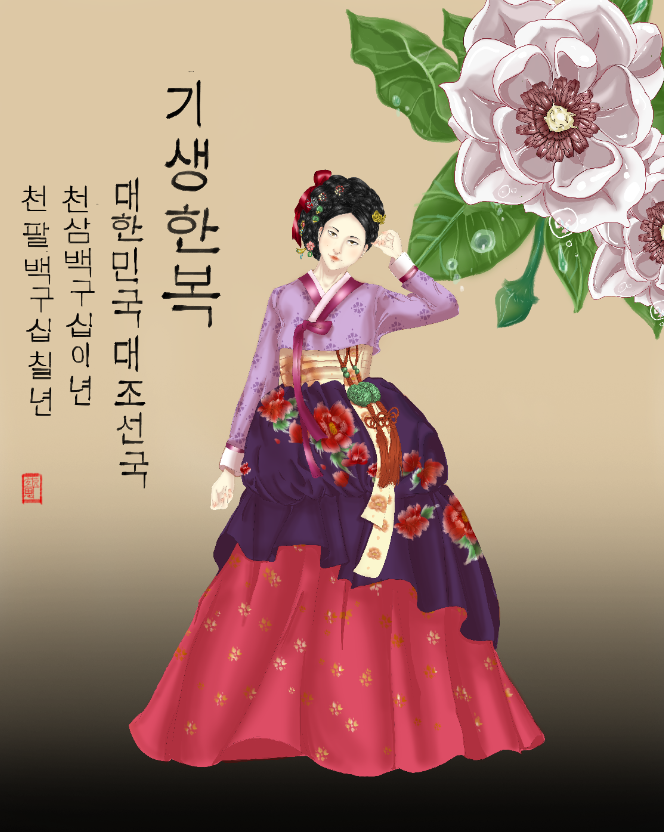
This woman is a traditional Korean entertainer and on occasion courtesan known as gisaeng. Gisaeng were courtesans who were highly skilled in poetry, dance, conversation, and many other artforms. Despite being highly educated, they were part of the cheonmin class or “vulgar commoners”. This meant they were slaves to the government and had no hope of social advancement thanks to Koreas cast system. Despite this, gisaeng experienced freedom that many women from “respectable society” never experienced. Despite being in a heavily restricted and guarded station, gisang technically lived outside of many Confucius Korean ideals. They could be innovative with fashion and wear colors and jewelry reserved normally for noblewomen, speak their mind, travel locally, attend social gatherings, and intermingle with men. The virtue of a wife was to be chaste, reserved, stoic and loyal. A gisaeng was technically not expected to follow traditional norms and could be outspoken, witty, expressive and engaging. This gave them an allure irresistible to men who looked for an intellectual partner. Gisaeng were trendsetters with fashion, poetry, and many more artforms, which gave them immense cultural value and even a form of respect despite being considered the lowest of the commoner class.